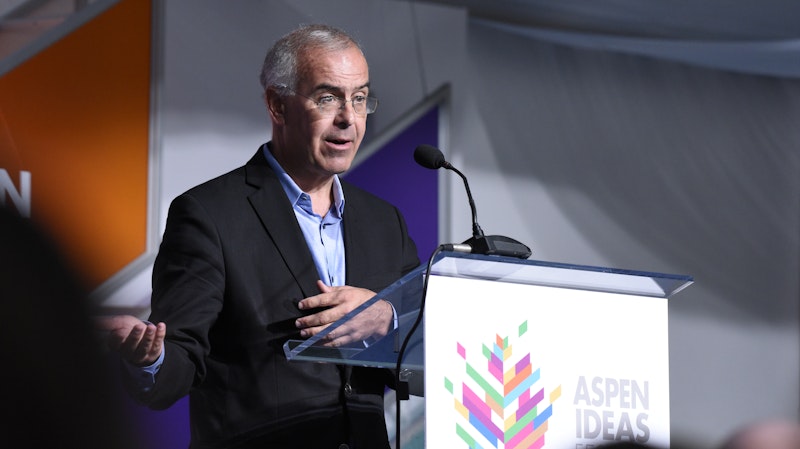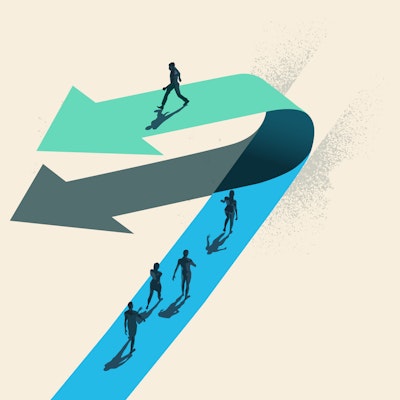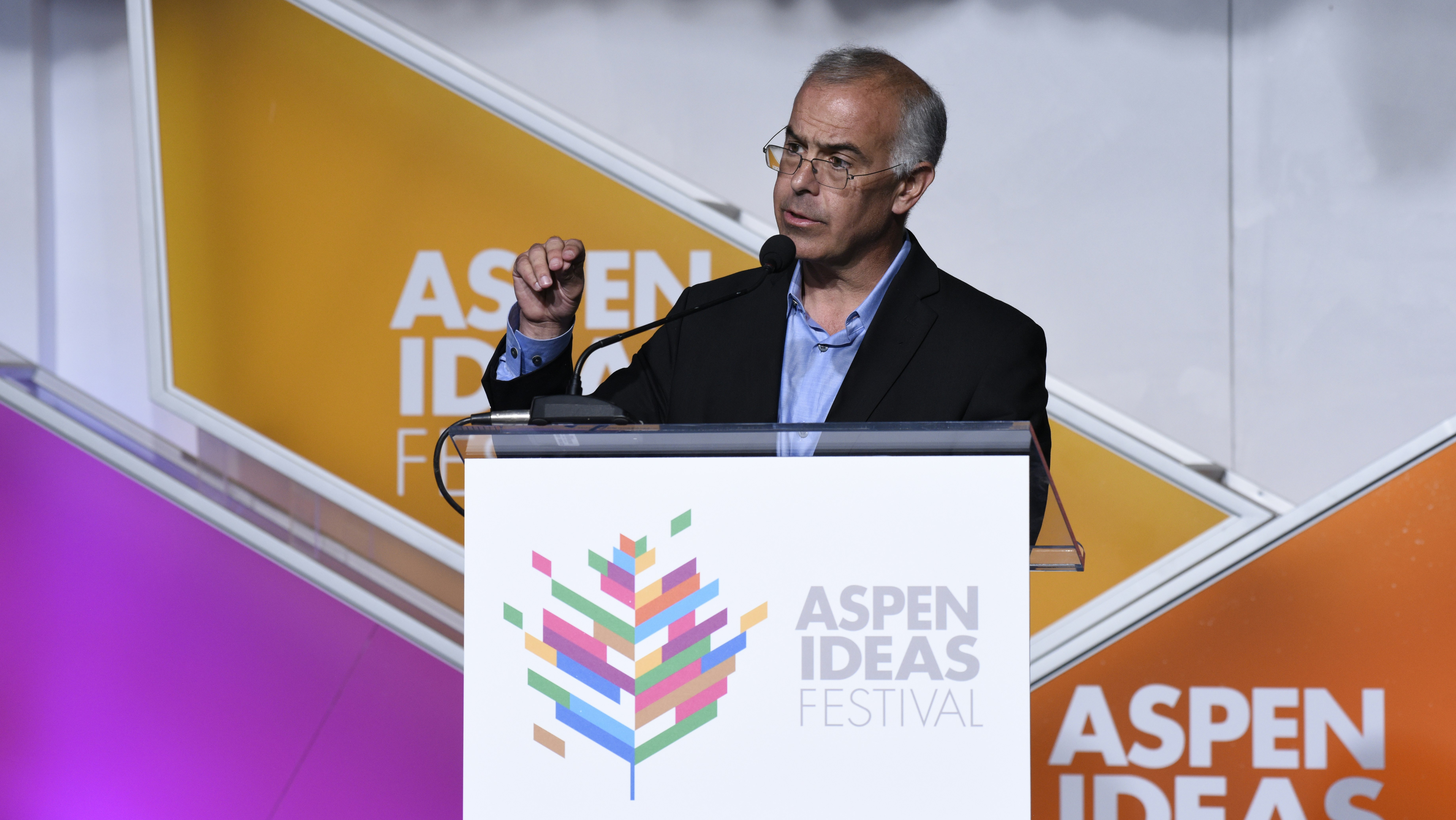
The Four Commitments: The Choices That Create Your Life
Setup
A successful life usually depends on making four major commitments: to a spouse or family, a faith or philosophy, a community, and a vocation. But how do we choose what we will commit to, and how do we execute those commitments? In later years, is it possible to launch a new booster stage with new or additional commitments? (Yes.) This will be another exploration of a life well lived.
Speakers
- 2016 Festival
The case for commitment in an era of evasiveness
The 21st century zeitgeist, according to New York Times columnist David Brooks, is not one that rewards commitments. Reasons for evasiveness may be manifold, but Brooks thinks the end result is the same: individuals and societies that are fragmented and listless. Without long-lasting commitments that weave through the fabric of your life, there’s nothing tying it all together. Whether shying away from big life decisions or ghosting a date, we are not inclined to commit to ourselves or others.
A definition for the times
2. How to make the leap of blind faith that commitments demand of you
Many of the big commitments we make in life, no matter how much planning or soul-searching goes into them, are still acts of blind faith. In the absence of cold logic to guide our decisions, David Brooks advocates for love and morality to be the foundation of our commitments:
-

David Brooks: The first thing love does is humbles us, it reminds us we're not even in control of ourselves. You can't control your own thinking when you're in love, when you look across the crowd you think you see your beloved sitting there. The second thing love does is it plows open hard ground. It opens up the crust of our lives that we've used to cover of ourselves, exposing soft flesh below. And it makes us more liable to suffer deep pain, but also deep joy. The third thing love does is it decenters the self. You realize your riches are not in yourself, they are in another person. And the final thing it does is it leads to a sort of fusion unity between two people.
A strong inner morality allows us to set aside what may seem like the logical choice and put a higher calling at the center of our decision-making. Morality decouples ourselves from our decisions, in a way, and can be a constant throughout decades of change.
What disciplines our commitments?
If love and morality compel our commitments, what maintains them over years and decades? What strengthens our commitments when love and morality butt heads with everything outside the mind? David Brooks has some suggestions:
Explore More
Society


Being a parent today is full of stress, pressure and information overload. Experts offering advice are everywhere, and for some parents, the wealth of available resources can...


The quest for work-life balance is never ending for many of us. The advice in this talk from the 2023 Aspen Ideas Festival still holds a lot of relevance, so we’re bringing it...


Living as a trans person in America comes with its share of challenges, which are sometimes even life-threatening. But some say it can also open up access to incredible freedo...

Global conflicts and health crises have put into stark relief deeply-ingrained gender roles in society. Yet the past years have also seen record-high numbers of women running...

The people in our lives shape who we are. But great relationships don’t just happen — they take care, intention, and ongoing effort. How do you know when to let go, adjust exp...


Advances in medicine and healthy living mean that more and more people will live to be 100. But just because their bodies can last doesn’t mean their bank accounts will keep u...


In the early days of cable television, there wasn’t a single network aimed at Black audiences. Sheila Johnson and her husband at the time saw an opening, and put all their hop...


Owning a professional sports team is not for the faint of heart. Results are volatile and wins and losses come with the strong emotions of a city’s fan base. But it’s a sound...


Looking around and experiencing the suffering and injustice in the world can make it difficult to believe that happiness exists. But the Judeo-Christian tradition teaches that...


This episode is from the 2022 Aspen Ideas Festival, but we’re bringing it back because it’s still as relevant as ever. Though it can sometimes feel like conflict and discord i...


Sir Ken Robinson believed that as a society, we tragically underestimate and underutilize human ability. We create linear systems for our minds modeled on industry and manufac...


Young people in America are struggling. The causes are varied and may not be entirely clear, but the results are unfortunately unmistakable. Many of our youth feel lonely, iso...

New York Times columnist and bestselling author David Brooks is known for bringing his thoughtful reflections on politics and culture, but at this year’s Aspen Ideas Festival,...

Jump in by watching our 15 most popular talks of all time. From black holes to jazz and civil rights to psychology hacks, we've collected the talks that remain audience favori...

Finding the national and global headlines understandably bleak lately? Whether you need mental distraction or stimulation, engross yourself in compelling topics and get a gli...

Today's kids are coming of age against a backdrop of political, social, technological and economic upheaval. While these circumstances are shaping a precocious generation that...


Hope seems like a simple concept, but the feeling can be difficult to hold onto. And when times are difficult and chaos swirls around us, it’s more important than ever. How do...

Advocates, healthcare providers, legislators, researchers, and venture capitalists are bringing the unique health needs of women to light – from vigorous policy debates on iss...

Ethical dilemmas, stakeholder pressure, building trust — leading organizations requires wisdom and stamina from the top. Who wouldn’t want some advice?

What makes us happy — really? How can we raise resilient and empathetic children? What does it mean to be truly connected in our increasingly digital world? Can we re-instill...










